12 min to read
The Invisible Crisis Reshaping Digital Marketing
Digital marketers face an existential paradox in late 2025. Your website ranks on page one of Google. Organic traffic metrics appear stable. Conversion funnels perform adequately. Yet an invisible erosion is underway that threatens to render traditional search engine optimization obsolete within 36 months.
The culprit is not algorithm updates or competitor strategies but a fundamental restructuring of how users discover information online. Generative Engine Optimization represents the most urgent strategic imperative for digital marketing professionals in 2026, yet recent industry surveys reveal that 47% of brands still lack a deliberate GEO strategy. This absence of preparedness creates a dangerous vulnerability as the search landscape undergoes its most dramatic transformation since Google's inception.
The urgency stems from irrefutable quantitative evidence. Analysis of 19 Google Analytics 4 properties revealed that AI-sourced traffic from platforms like ChatGPT, Perplexity, Claude, and Gemini increased 527% between January and May 2025 alone. ChatGPT reached 400 million weekly active users by February 2025, with some enterprise websites now deriving over 1% of total sessions from large language model referrals. Meanwhile, Gartner's prediction that traditional search engine volume will decline 25% by 2026 is no longer speculative but observable in real-time traffic patterns.
More concerning, Y Combinator data forecasts a 50% decline in conventional search traffic by 2028, with that volume migrating entirely to generative engines.
The projected transition from traditional search to AI-powered search shows the critical inflection point occurring between 2026-2028, fundamentally reshaping digital marketing strategiesThis seismic shift demands an immediate strategic response because the competitive advantages compound rapidly. Early adopters of GEO practices establish authority signals that reinforce over time, creating increasingly difficult barriers for late entrants. The window for establishing a foundational presence in AI-generated responses remains open in late 2025, but industry analysts project that by mid-2026, dominant positions will have calcified around brands that implemented comprehensive GEO strategies during 2024-2025. For SEO professionals and digital marketers, understanding and implementing GEO is no longer optional preparation for a distant future but an immediate operational requirement.
Understanding the Fundamental Paradigm Shift
Generative Engine Optimization represents a categorical departure from traditional search engine optimization, not merely an incremental evolution. The distinction lies in how users obtain information and how content creators achieve visibility. Traditional SEO operates on a click-through model where success is measured by ranking position, organic traffic volume, and conversion rates derived from website visits. The user journey follows a predictable pattern: query submission, results page scanning, link selection, website visitation, and information consumption. This model has governed digital marketing strategy for over two decades and has shaped content creation, technical infrastructure, and measurement frameworks across the entire industry.
GEO fundamentally disrupts this established paradigm by eliminating the click-through step entirely. When users query ChatGPT, Perplexity, or Google AI Overviews about topics within your expertise domain, these systems generate synthesized answers by extracting and combining information from multiple sources. The user receives a complete response within the AI interface, often without awareness of the underlying sources and certainly without visiting your website. Success in this environment is measured not by traffic volume but by citation frequency, mention prominence, and share of voice within AI-generated responses. Your brand achieves visibility through being referenced, quoted, or recommended by the AI system rather than through appearing in a ranked list of blue links.
The implications extend far beyond superficial tactical adjustments. Content optimization shifts from keyword density and backlink acquisition toward factual accuracy, structural clarity, and citation-worthiness. Technical infrastructure priorities move from crawlability and page speed toward schema markup implementation and entity relationship definition. Authority building evolves from domain authority metrics toward E-E-A-T signal demonstration across multiple platforms. Update cycles accelerate from quarterly algorithm adjustments to continuous model training updates that can alter citation patterns within days. The traffic model transforms from click-based revenue generation to influence-based brand positioning, where users encounter your expertise without directly engaging your digital properties.
 |
|
|
|---|---|---|
|
|
|
|
Critical analysis reveals that these changes are not temporary disruptions but permanent structural transformations. Zero-click searches increased from 56% to 69% between May 2024 and May 2025, meaning the majority of search interactions now conclude without any website visit. Independent research tracking 68,000 real search queries found that users clicked on results only 8% of the time when AI summaries appeared, compared to 15% without them—a 46.7% relative reduction in click-through behavior. For content creators, this presents an uncomfortable reality: producing the best answer no longer guarantees traffic if AI systems extract and present that answer without attribution or if competing sources receive preferential citation.
Empirically (Try & Error) Validated GEO Optimization Techniques
The transition from theoretical GEO principles to actionable implementation requires understanding which specific techniques demonstrably improve AI visibility. Fortunately, rigorous academic research and extensive industry testing have identified optimization methods with measurable impact on citation frequency across generative engines. Princeton University researchers published findings in KDD 2024 demonstrating that specific content modifications can boost source visibility by up to 40% in generative engine responses. Subsequent industry studies have expanded this knowledge base, providing digital marketers with empirically validated tactics for immediate implementation.
Statistics addition emerges as the single most impactful quick-win optimization, increasing visibility by 35-40% in controlled testing environments. The mechanism is straightforward: AI systems prioritize concrete, verifiable data when synthesizing responses because numerical specificity enhances answer credibility and reduces hallucination risk. Replacing generalized statements like "many businesses struggle with email marketing" with precise data points such as "email marketing generates $42 for every $1 spent, according to Litmus's 2024 research" dramatically increases citation probability. The effectiveness stems from AI models' preference for extracting discrete facts over vague assertions, combined with the inherent shareability of statistical claims.
Implementation requires systematic content auditing to identify high-performing articles currently ranking well for target keywords, then strategically inserting 2-3 relevant statistics with proper source attribution. The time investment is minimal—approximately 30 minutes per article—yet the citation improvement manifests within 2-4 weeks as AI models incorporate updated content into their retrieval systems. Critical analysis suggests this technique's exceptional return on investment makes it the mandatory first step for organizations initiating GEO strategies, particularly those with limited resources or technical capabilities.
Source citation produces comparable visibility improvements of 30-35%, functioning synergistically with statistics addition. AI systems evaluate content trustworthiness partially through external reference density, using citation patterns as proxy indicators for factual rigor and editorial standards. Content that links to authoritative studies, official data sources, and recognized expert statements receives preferential treatment during the retrieval augmented generation process that powers most AI search implementations. The practice also reduces legal and reputational risk for AI platforms by establishing clear attribution chains, creating additional incentive for systems to cite well-referenced content.
FAQ schema markup delivers 25-30% visibility gains by structuring content in formats that mirror natural language query patterns. This technique exploits the fundamental architecture of modern AI search: users pose questions in conversational language, and systems retrieve structured question-answer pairs that can be directly incorporated into responses. Implementing FAQ schema involves adding JSON-LD markup to pages containing common questions and complete, self-contained answers. The structured data serves as a translation layer between human-readable content and machine-interpretable information, dramatically reducing the computational effort required for AI systems to extract and verify answer accuracy.
E-E-A-T signal enhancement produces 20-25% improvements but requires substantially greater investment in authority building across multiple dimensions. Experience, Expertise, Authoritativeness, and Trustworthiness constitute the evaluative framework AI systems increasingly employ to assess source credibility. Demonstrating these qualities demands author byline optimization with credentials, organizational entity establishment through schema markup, first-hand experience documentation, regular content updates with timestamps, external validation through reviews and testimonials, and consistent presence in authoritative industry directories. The implementation timeline extends to 8-12 weeks, but the compounding effects create sustainable competitive advantages that resist commoditization.
Empirical research demonstrates that structured comparative content delivers the highest visibility impact at 50%+, followed by statistics addition and source citations, providing clear priorities for GEO implementationStructured comparative content represents the highest-impact technique, potentially increasing visibility by 50% or more for competitive queries. AI systems frequently encounter queries requiring product, service, or approach comparison.
Content presenting objective, data-driven comparisons in standardized formats receives disproportionate citation rates because it directly fulfills complex user intents that would otherwise require synthesizing multiple disparate sources. Effective implementation involves creating comprehensive comparison tables with measurable criteria, explicit solution names, verifiable characteristics, standardized formats enabling rapid scanning, and transparent methodology documentation. The ethical dimension deserves emphasis: comparisons must maintain factual accuracy even while strategically highlighting competitive advantages, as AI systems increasingly detect and penalize manipulative content.
Quotation addition and entity optimization deliver moderate improvements of 18-22% and 15-20% respectively, while recency signals provide 15-20% gains with minimal implementation complexity. The cumulative effect of deploying multiple techniques simultaneously often exceeds the sum of individual impacts, as AI systems reward content demonstrating multiple trust and clarity indicators. Organizations implementing comprehensive GEO strategies incorporating five or more validated techniques consistently achieve 40-60% overall citation rate improvements within 6-8 months of systematic deployment.
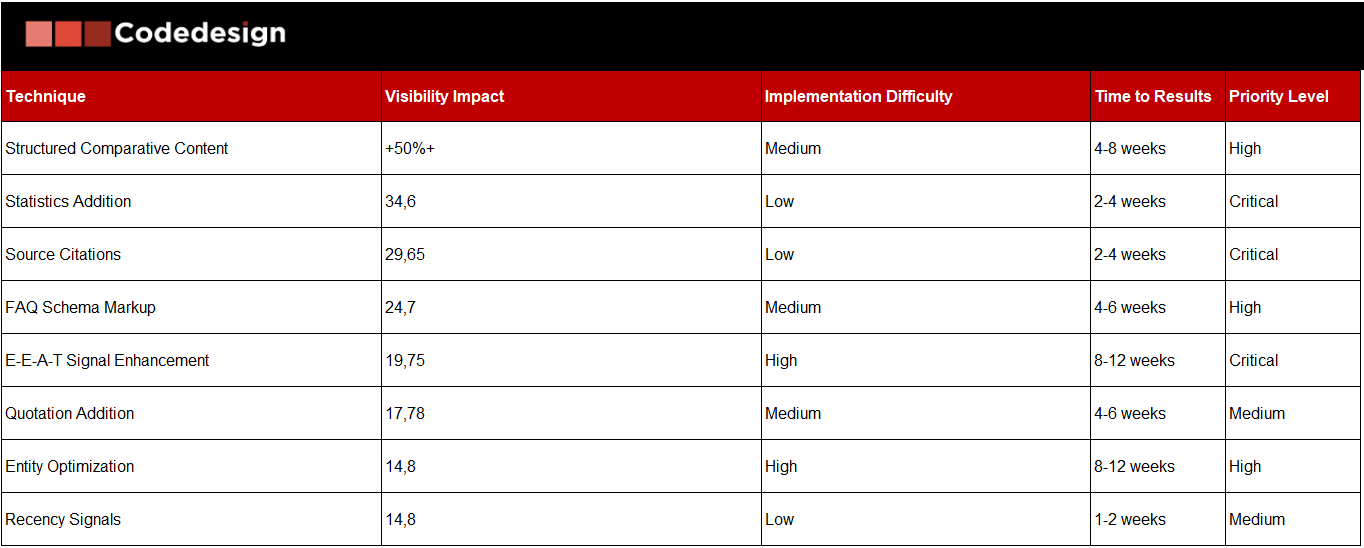
|
|
|
|
|
|---|---|---|---|---|
|
|
|
|
|
|

Strategic Implementation Framework for 2026
Translating empirical GEO knowledge into organizational capability requires structured implementation frameworks that coordinate technical, content, and measurement initiatives across defined timelines. The complexity stems from GEO's interdependencies: schema markup provides limited value without citation-worthy content, while authoritative content achieves suboptimal visibility without proper technical infrastructure. Organizations must therefore adopt phased approaches that establish foundational capabilities before layering advanced techniques, while simultaneously maintaining traditional SEO practices that continue driving majority traffic through at least 2027.
Foundation Phase (Q4 2025) establishes baseline understanding and quick-win identification. Organizations should conduct comprehensive content audits evaluating existing assets through GEO criteria: factual accuracy, structural clarity, citation-worthiness, schema markup presence, and E-E-A-T signal strength.
Parallel implementation of AI visibility tracking tools like Promptmonitor, Otterly.ai, or WriteSonic's GEO suite provides quantitative baselines measuring current citation rates across major platforms. Team training on GEO fundamentals ensures personnel understand the paradigm shift and can contribute to optimization efforts. Budget allocation secures resources for tools, content development, and technical implementation across subsequent phases. The expected outcome is baseline metric establishment and identification of 5-10 quick-win opportunities requiring minimal investment but delivering 15-25% initial visibility improvements.
Optimization Phase (Q1 2026) focuses on technical infrastructure and high-value content restructuring. Schema markup deployment should prioritize Article, FAQ, Organization, and Review schemas providing maximum AI interpretability. E-E-A-T enhancement initiatives include author byline optimization, organizational entity strengthening, and first-hand experience documentation. Mobile optimization and page speed improvements ensure AI crawler accessibility across device contexts. Content teams should systematically add statistics and source citations to top 20-30 performing pages while restructuring format for enhanced scannability. This phase typically delivers 15-25% cumulative visibility improvements as technical foundations amplify content quality enhancements.
Expansion Phase (Q2 2026) diversifies citation sources and scales optimization across broader content inventory. Digital PR campaigns should target high-authority industry publications, directories, and community platforms frequently cited by AI systems. Citation source mapping identifies which domains AI platforms preferentially reference in your industry, informing strategic placement priorities. Multi-platform testing across ChatGPT, Perplexity, Gemini, and AI Overviews reveals platform-specific citation patterns requiring tailored optimization approaches. Content production adopts GEO-first methodologies ensuring new assets incorporate optimization techniques from inception rather than through retrofitting. Expected outcomes include 30-40% citation rate improvements as authority signals strengthen across diversified platforms.
Refinement Phase (Q3 2026) applies data-driven insights to optimize underperforming content and address competitive gaps. Performance analysis should identify high-citation-rate patterns in content structure, topic coverage, and formatting that can be systematically replicated. Competitor benchmarking across standardized prompt sets reveals share of voice gaps and opportunities. A/B testing evaluates alternative content structures, schema implementations, and E-E-A-T presentations for maximum citation impact. This analytical phase typically sustains 40-50% visibility growth through intelligent resource allocation toward highest-return optimizations.
Scaling Phase (Q4 2026) systematizes GEO best practices into organizational workflows and expands to emerging platforms. Documentation of successful techniques, implementation checklists, and quality standards enables consistent optimization across expanding content volumes. Exploration of voice search optimization, multimodal content formats, and emerging AI platforms maintains competitive positioning as the landscape evolves. Annual strategic review and 2027 planning incorporate lessons learned while adapting to inevitable platform changes. Organizations reaching this phase typically achieve 50%+ total citation rate improvements relative to pre-GEO baselines while establishing systematic capabilities resistant to personnel turnover.
 |
|
|
|
|---|---|---|---|
|
|
|
|
|
Measurement Frameworks for AI Visibility
The transition from traditional SEO to GEO necessitates fundamental reconceptualization of success metrics and measurement methodologies. Click-through rates, keyword rankings, and organic traffic volumes—the triumvirate of conventional SEO measurement—provide incomplete and potentially misleading indicators of AI-era performance. Organizations optimizing exclusively for these legacy metrics risk strategic misdirection, investing resources in tactics that improve traditional search visibility while failing to establish presence in the AI-generated responses increasingly dominating user experience. Comprehensive AI visibility measurement requires multi-dimensional frameworks tracking brand mentions, citation quality, share of voice, source attribution, sentiment, platform coverage, prompt coverage, and conversion impact.
Brand mention frequency constitutes the foundational metric, measuring how often your brand appears in AI responses to industry-relevant queries. Implementation involves identifying 20-30 core questions your target audience asks, then systematically testing these queries across ChatGPT, Perplexity, Gemini, and Google AI Overviews on weekly or bi-weekly intervals. Manual testing establishes baselines and validates automated tool accuracy, though scalable monitoring requires specialized platforms like Otterly.ai, Promptmonitor, or AirOps that can execute thousands of query variations and track mention patterns over time. Target benchmarks for 2026 suggest 60%+ mention rates for core queries, recognizing that AI citation patterns exhibit significant variance requiring statistical approaches rather than single-measurement evaluation.
Citation quality differentiates between passing references, paraphrased content, and direct quotations with attribution—distinctions carrying profound implications for authority perception and traffic potential. Direct citations with source links provide maximum value by establishing brand recognition and offering users pathways to deeper engagement. Paraphrased citations convey information without attribution, building general authority but missing personalized brand association. Passing references acknowledge brand existence without substantive engagement. Measurement involves manual classification of citation types across sample queries, with target benchmarks of 40%+ direct citations among total mentions representing robust performance.
Share of voice benchmarks brand visibility against competitors by measuring relative mention frequencies in identical query contexts. If industry queries consistently surface three competitor brands alongside yours, achieving 25% share of voice represents parity, while 40%+ indicates market leadership. Implementation requires standardized prompt sets tested across platforms, competitor identification in responses, and ratio calculations. This metric proves particularly valuable for justifying GEO investment to leadership by demonstrating competitive positioning in quantifiable terms.
Source attribution analysis reveals which content properties AI systems cite when mentioning your brand: owned website content, third-party publications, social platforms, directories, or community forums. Distribution heavily weighted toward third-party sources suggests insufficient owned content optimization, while 50%+ citation rates from owned properties indicate effective GEO implementation. This analysis informs content development and digital PR prioritization by identifying which content types and publication venues deliver maximum citation leverage.
Platform coverage measures presence consistency across ChatGPT, Perplexity, Gemini, AI Overviews, and emerging platforms. Significant performance variance across platforms indicates opportunities for platform-specific optimization addressing each system's unique citation preferences. Target benchmarks of 70%+ coverage across four or more major platforms ensure visibility regardless of users' platform preferences, crucial given ongoing market share volatility as platforms compete for dominance.
Conversion impact tracking connects AI visibility to business outcomes by measuring leads, conversions, and revenue originating from AI-referred traffic. Implementation requires Google Analytics 4 custom channel groups segregating traffic from chat.openai.com, perplexity.ai, gemini.google.com, and similar referrers. UTM parameter standardization enables campaign-level attribution. While AI-sourced conversions currently represent 2-5% of totals for most organizations, this proportion is projected to reach 15-25% by 2027 as adoption accelerates. Early measurement establishes trending visibility and informs resource allocation decisions.
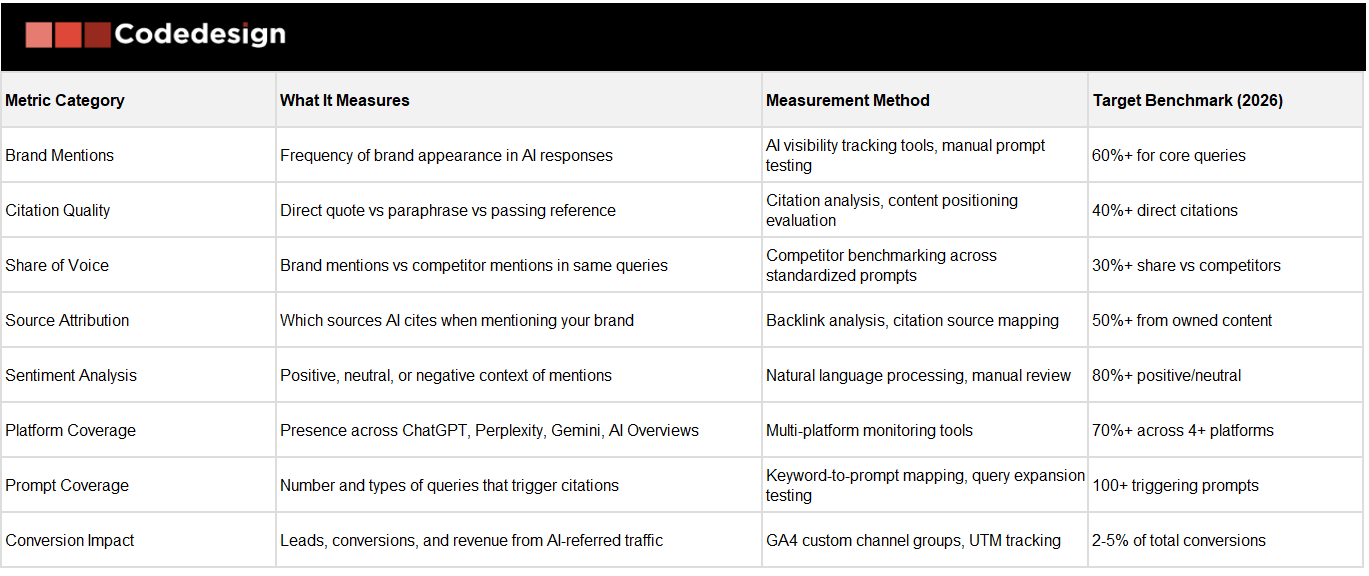 |
|
|
|
|---|---|---|---|
|
|
|
|
|

Critical Analysis and Future Outlook
The GEO imperative rests on traffic shift projections that, while supported by substantial evidence, contain inherent uncertainty requiring critical evaluation. Gartner's prediction of 25% traditional search volume decline by 2026 represents directional guidance rather than precise forecasting. Recent Similarweb data showing 4% year-over-year growth in global search volumes through mid-2025 appears contradictory, though deeper analysis reveals these figures capture total query volume without distinguishing zero-click AI-answered queries from traditional click-through searches. The reconciliation lies in recognizing that search query volume may increase even as click-through rates decline—users search more frequently but increasingly receive answers without website visits.
The timeline uncertainty creates strategic tension between premature resource reallocation away from still-productive traditional SEO and delayed GEO investment resulting in competitive disadvantage. Conservative projections suggest traditional search will continue delivering majority traffic through 2027, advocating for incremental GEO adoption alongside maintained SEO efforts. Aggressive projections indicating 50% traditional search decline by 2028 argue for immediate, comprehensive GEO prioritization accepting short-term opportunity costs for long-term positioning. The optimal balance likely involves hybrid strategies maintaining SEO fundamentals while systematically building GEO capabilities, with resource allocation ratios shifting annually based on observed traffic patterns.
Platform fragmentation introduces additional complexity as ChatGPT, Perplexity, Gemini, Claude, and emerging competitors employ distinct citation algorithms and source preferences. Optimization techniques effective for ChatGPT may deliver limited impact on Perplexity, which demonstrates stronger preference for academic and institutional sources. This fragmentation prevents universal optimization strategies, requiring platform-specific approaches that increase implementation complexity and resource requirements. Organizations must either accept incomplete platform coverage or invest substantially in multi-platform optimization—decisions carrying significant strategic implications.
The ethical dimensions deserve emphasis as GEO techniques create opportunities for manipulation potentially degrading information quality. Structured comparative content optimized for AI citation could present biased comparisons masquerading as objective analysis. Statistics addition could selectively highlight favorable data while omitting contrary evidence. The pressure to achieve AI visibility may incentivize factual compromises, particularly as competitive intensity increases. Industry self-regulation and platform detection mechanisms must evolve alongside GEO practices to maintain information ecosystem integrity. Digital marketers bear professional responsibility for implementing GEO ethically, recognizing that short-term visibility gains through deceptive practices create long-term reputational and legal risks.
Despite these uncertainties and concerns, the fundamental trajectory appears irreversible. User behavior is shifting toward conversational AI interfaces providing direct answers over traditional search requiring website visits. This shift is driven by genuine user experience improvements: AI-generated responses are faster, more comprehensive, and better suited to mobile contexts than website navigation. Platform investment is accelerating rather than moderating, with Google, Microsoft, OpenAI, and Anthropic collectively investing billions in generative AI development. The question is not whether GEO becomes essential but how rapidly the transition occurs and which organizations position themselves advantageously.
For SEO professionals and digital marketers, the strategic imperative is unambiguous: begin comprehensive GEO implementation immediately while maintaining traditional SEO capabilities through at least 2027. Organizations initiating GEO strategies in Q4 2025 or Q1 2026 can establish authority signals and citation patterns before competitive saturation, capturing disproportionate visibility during the critical 2026-2028 transition period. Delayed action beyond mid-2026 risks permanent competitive disadvantage as early movers consolidate AI visibility leadership. The future of search visibility belongs to organizations recognizing that optimization now serves not to improve rankings but to become the answer itself.
The era of information discovery has entered a new chapter in which generative engines—not traditional search listings—serve as the primary gateways to knowledge. Organizations that embrace GEO will secure enduring influence by becoming the very answers users seek, while those that delay will cede visibility to more agile competitors. By adopting the phased implementation framework, deploying empirically validated optimization techniques, and rigorously measuring AI-driven citations, digital marketers can navigate the transition with confidence. The imperative is clear: establish your brand’s authority within AI-generated responses today, or risk irrelevance tomorrow.
Bruno Gavino leads Codedesign, a global digital marketing agency helping companies scale demand with balanced, data-driven strategies.
 |
Thoughts by Bruno GavinoBruno Gavino is the CEO of Codedesign, a Lisbon-based digital marketing agency, with offices in Boston, Singapore, and Manchester (UK). He plays a pivotal role in shaping the agency’s growth and direction, particularly in the realm of digital marketing. Codedesign has built a strong team of dedicated professionals, including marketers, developers, and creative thinkers, with a mission to help businesses grow online. Bruno’s expertise extends to various aspects of digital marketing, and he has been active in sharing his insights on the impact of significant global events on the digital marketing landscape. His contributions to the field extend beyond his role at Codedesign. Bruno Gavino is known for his broad perspective on digital strategies and innovative solutions that drive the company’s vision. |
|
|
CodedesignCodedesign is a top digital marketing agency with a strong multicultural and international presence, offering expert services in digital marketing. Our digital agency in Lisbon, Boston, and Manchester enables us to provide market-ready strategies that suit a wide range of clients across the globe (both B2B and B2C). We specialize in creating impactful online experiences, focusing on making your digital presence strong and efficient. Our approach is straightforward and effective, ensuring that every client receives a personalized service that truly meets their needs. Our digital agency is committed to using the latest data and technology to help your business stand out. Whether you’re looking to increase your online visibility, connect better with your audience, get more leads, or grow your online sales. For more information, read our Digital Strategy Blog or to start your journey with us, please feel free to contact us. |
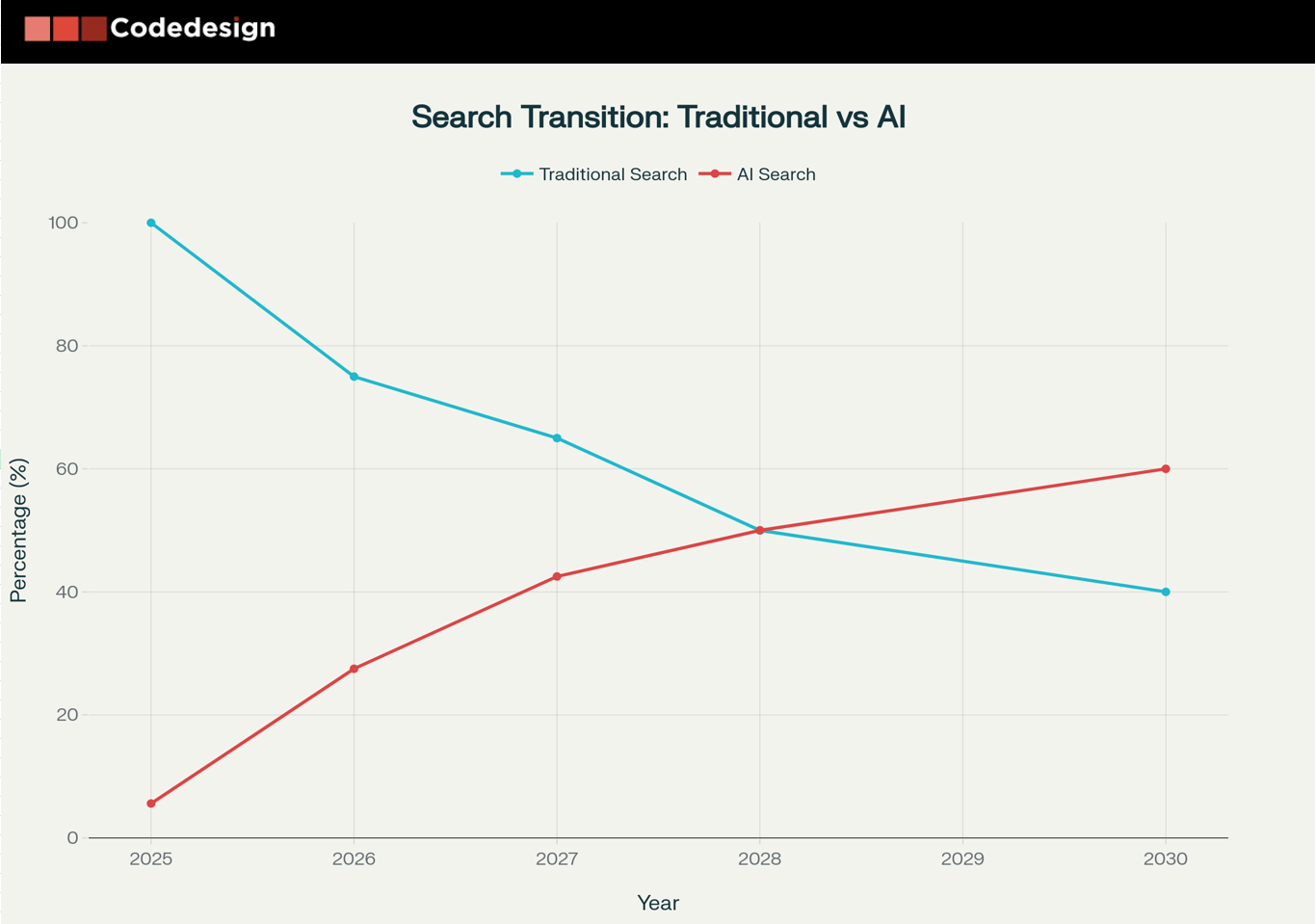
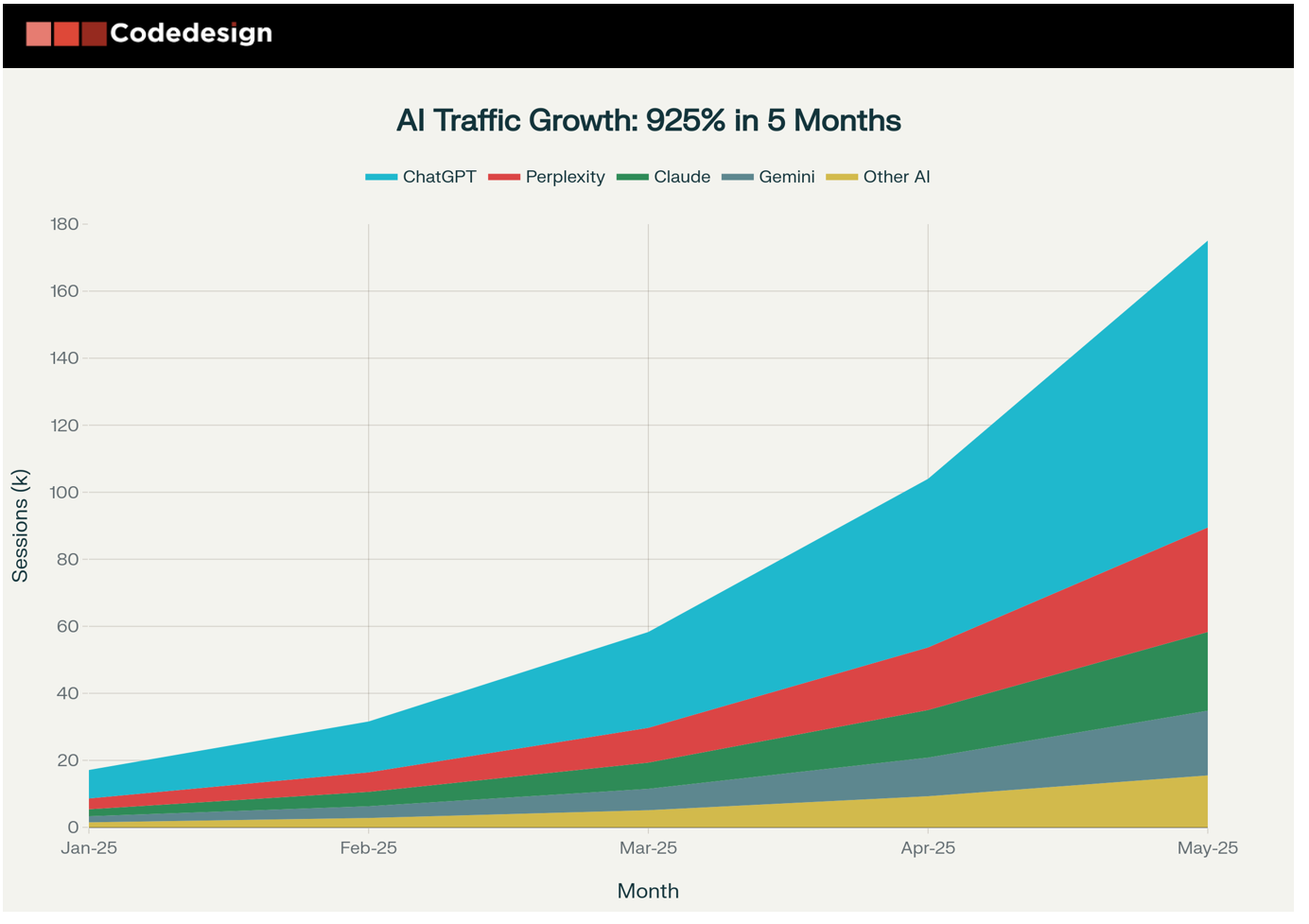
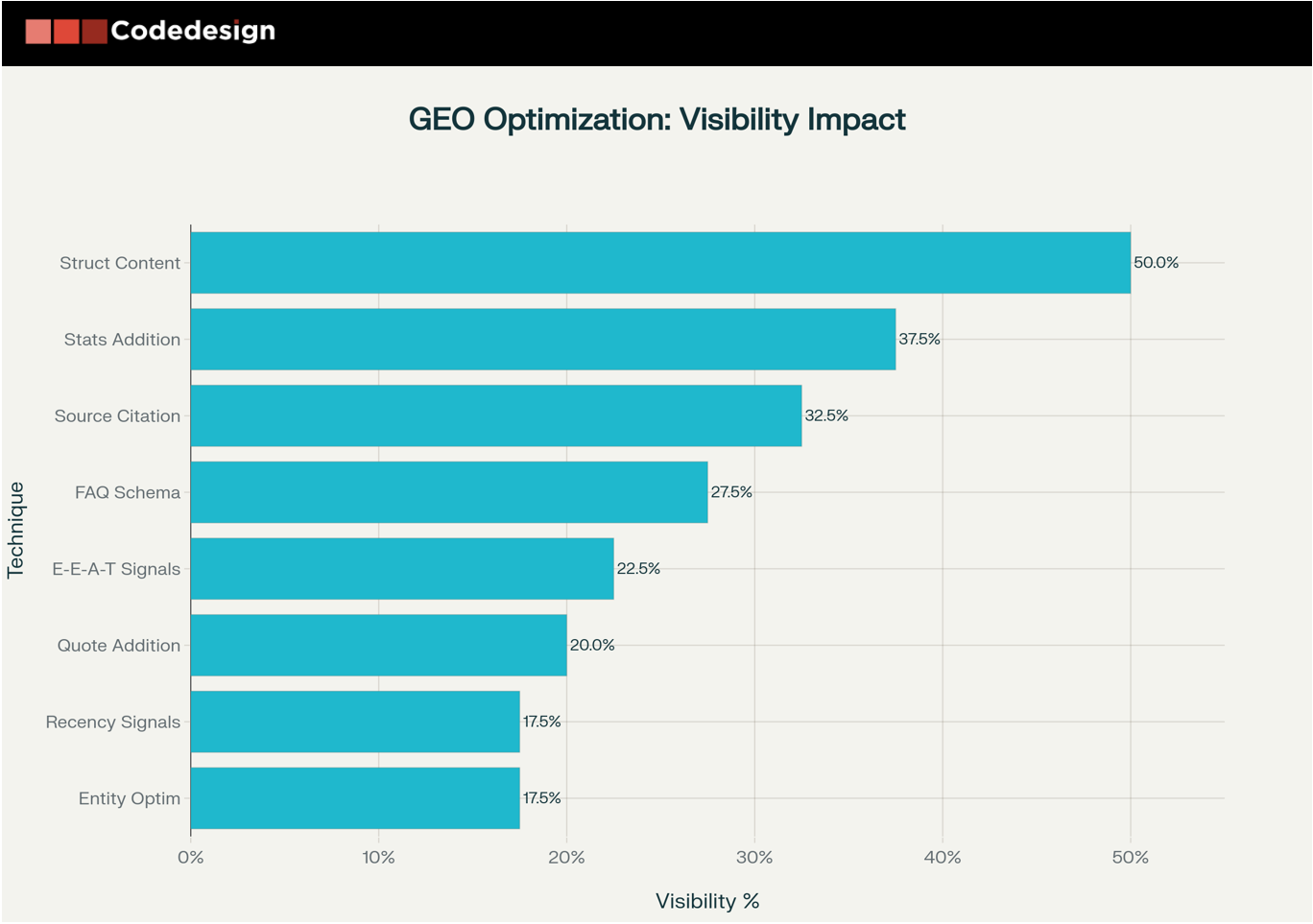




Add comment ×